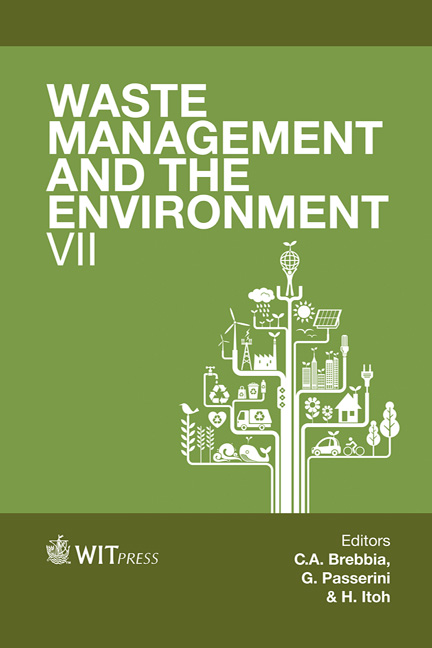Industrial Aluminum Hazardous Waste As A New Raw Material For Zeolite Synthesis
Price
Free (open access)
Transaction
Volume
180
Pages
10
Published
2014
Size
2,087 kb
Paper DOI
10.2495/WM140231
Copyright
WIT Press
Author(s)
A. López-Delgado, O. Rodríguez, I. Padilla, R. Galindo & S. López-Andrés
Abstract
In Spain, the secondary aluminum industry is a mature activity which produces 35% of the total aluminum production. This industry generates slag (black dross) with a valuable content of aluminum which is recovered by dry milling processes in the aluminum tertiary industry. The powdered fine solid is trapped in the sleeve filter suction system of the aluminum slag milling process. This solid is considered as a hazardous waste within the 10 03 21 group in the European Waste Catalogue (EWC), because of the very fine grain size (x50 < 50 μm) and the presence of dangerous substances (metallic aluminum, AlN, heavy metals, etc.). The high aluminum nitride content, ranging between 2 and 24%, is remarkable and it releases ammonia gas in the presence of environmental humidity. The aim of this work was to evaluate the complete recovery of the fine powders coming from the sleeve filters in the aluminum tertiary industry, as a zeolite. Two types of zeolite, analcime and NaP were obtained by hydrothermal processes from the aluminum waste and silica as raw materials. Different compositions of wastes and parameters such as time and temperature were assayed to study their effects on the obtained zeolites. The materials were characterized by X-ray diffraction and scanning electron microscopy. Keywords: aluminum hazardous waste, recycling, zeolite, analcime, NaP.
Keywords
aluminum hazardous waste, recycling, zeolite, analcime, NaP.





